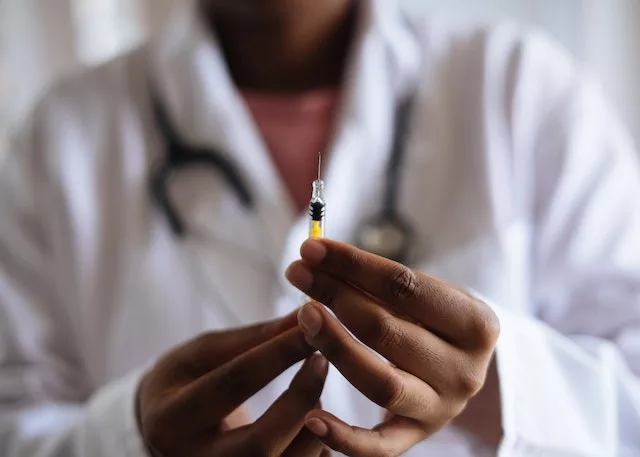In the intricate world of healthcare, phlebotomists play a crucial role as the bridge between patients and laboratory tests. They are the skilled professionals who meticulously collect blood samples, ensuring accurate diagnoses and timely treatment interventions. Embark on a journey to understand the multifaceted world of phlebotomy, unraveling the duties, skills, education, and career prospects of these dedicated medical technicians.
Unveiling the Role of a Phlebotomist
At the heart of a phlebotomist’s responsibilities lies the art of blood collection. They are the experts in venipuncture, the process of drawing blood from a vein in the arm. With steady hands and a keen eye for detail, they navigate the intricacies of the human vascular system, ensuring minimal discomfort for their patients.
Beyond blood collection, phlebotomists are entrusted with a range of tasks that contribute to the smooth functioning of a medical laboratory. They meticulously label blood samples with patient information, ensuring accurate identification and tracking. They prepare samples for transport to the laboratory, adhering to strict guidelines to preserve the integrity of the specimens.
Patient care extends beyond the physical act of blood collection. Phlebotomists are often the first point of contact for patients undergoing laboratory tests. They exercise empathy and effective communication skills to address patient concerns and alleviate anxieties. Their ability to establish rapport with patients fosters trust and enhances the overall patient experience.
Demystifying the Skills of a Phlebotomist

The world of phlebotomy demands a blend of technical expertise, interpersonal skills, and unwavering attention to detail. Phlebotomists must possess a comprehensive understanding of human anatomy, particularly the vascular system, to effectively locate and access veins. They are well-versed in blood collection techniques, ensuring minimal patient discomfort and upholding the highest standards of asepsis.
Effective communication is paramount for phlebotomists. They must be able to clearly explain procedures to patients, address their concerns, and provide reassurance throughout the process. Empathy and compassion are essential qualities, as they interact with patients who may be anxious or apprehensive about blood draws.
Charting the Path to a Phlebotomy Career
Aspiring phlebotomists can embark on their journey through various educational pathways. Community colleges, vocational schools, and hospitals often offer phlebotomy training programs that typically span 6 to 12 weeks. These programs provide comprehensive instruction in anatomy, physiology, blood collection techniques, safety procedures, and patient care.
Upon completing a phlebotomy training program, aspiring professionals must successfully pass a certification exam. In the field of phlebotomy, the National Phlebotomy Association (NPA) Certified Phlebotomist Technician (CPT) exam is widely recognized for its competence.
Reap the Rewards of a Phlebotomy Career
The field of phlebotomy offers a multitude of rewarding career opportunities. Phlebotomists are in high demand across various healthcare settings, including hospitals, clinics, blood donation centers, doctors’ offices, and nursing homes. According to the Bureau of Labor Statistics, job growth for phlebotomists is projected at 22% from 2020 to 2030, much faster than the average for all occupations.
Phlebotomists enjoy competitive salaries, with the median annual wage reaching $41,940 in May 2020. The relatively short training period and the opportunity to make a tangible difference in patient care further enhance the appeal of this rewarding profession.
How to Become a Phlebotomist?
Becoming a phlebotomist can be a rewarding career choice for those who are interested in the medical field and enjoy working with people. Phlebotomists are responsible for collecting blood samples from patients for a variety of medical tests. They must have a strong understanding of anatomy and physiology, as well as be able to work safely and efficiently.
- Complete a phlebotomy training program. There are many different phlebotomy training programs available, both online and in person. These programs typically last 6 to 12 weeks and cover topics such as anatomy, physiology, blood collection techniques, and safety procedures.
- Pass a certification exam. Once you have completed a phlebotomy training program, you will need to pass a certification exam. There are several different phlebotomy certification exams available, but the most widely recognized is the National Phlebotomy Association (NPA) Certified Phlebotomist Technician (CPT) exam.
- Gain experience. Once you have been certified, you will need to gain experience working as a phlebotomist. You can do this by volunteering at a hospital, clinic, or blood donation center, or by applying for entry-level phlebotomist positions.
How long does it take to become a Phlebotomist?
It typically takes 6 to 12 months to become a phlebotomist. This includes the time it takes to complete a phlebotomy training program, pass a certification exam, and gain experience.
Additional requirements for becoming a Phlebotomist
- Must be at least 18 years old
- Have a high school diploma or GED
- Be able to pass a background check and drug test
- Have strong communication and interpersonal skills
Phlebotomist salary
The median annual salary for phlebotomists was $41,940 in May 2020. The top 10% of earners made more than $58,540, while the bottom 10% of earners made less than $29,960.
Conclusion
Phlebotomists stand as unsung heroes in the healthcare landscape, their skilled hands playing a pivotal role in countless medical diagnoses and treatment decisions. Their dedication, expertise, and compassionate approach to patient care make them indispensable members of the medical team. If you are seeking a rewarding career path that allows you to make a direct impact on patient health, consider exploring the dynamic world of phlebotomy.


